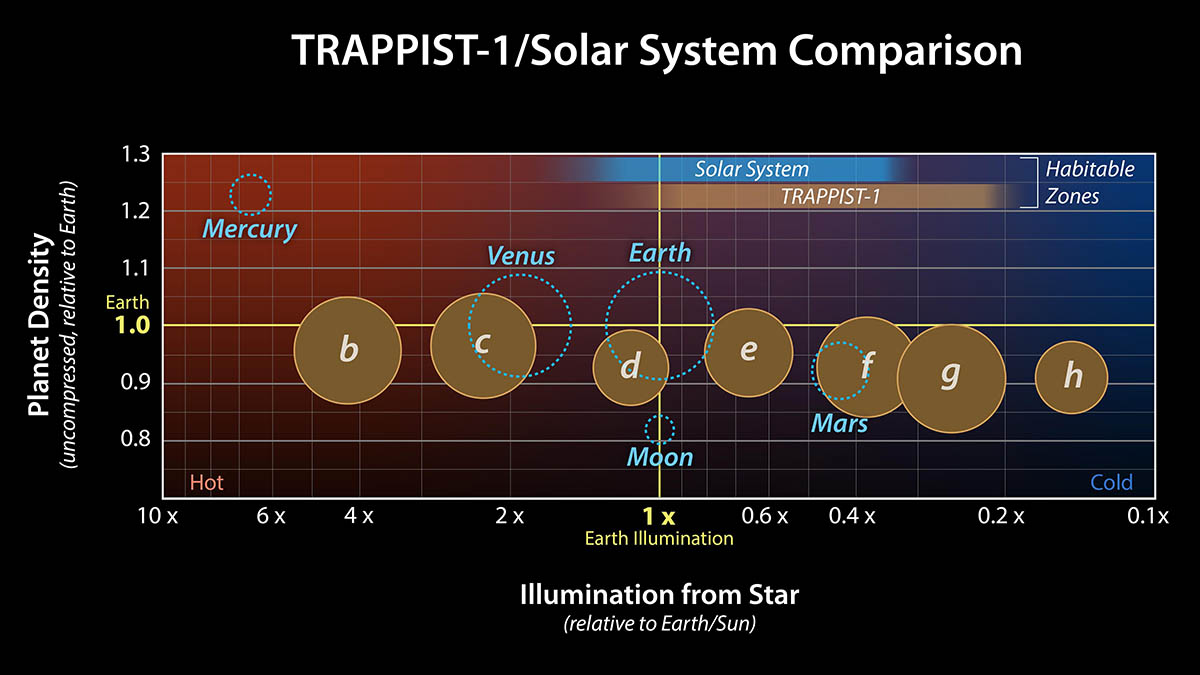A planet’s density is determined by its composition as well as its size: Gravity compresses the material a planet is made of, increasing the planet’s density. Uncompressed density adjusts for the effect of gravity and can reveal how the composition of various planets compare. (NASA/JPL-Caltech)
Home A planet’s density is determined by its composition as well as its size: Gravity compresses the material a planet is made of, increasing the planet’s density. Uncompressed density adjusts for the effect of gravity and can reveal how the composition of various planets compare. (NASA/JPL-Caltech) A planet’s density is determined by its composition as well as its size: Gravity compresses the material a planet is made of, increasing the planet’s density. Uncompressed density adjusts for the effect of gravity and can reveal how the composition of various planets compare. (NASA/JPL-Caltech)




